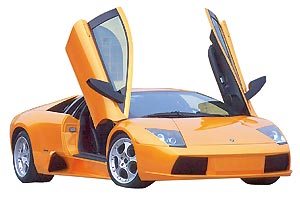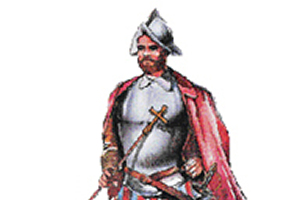The lands that now make up Italy were home to a powerful culture that arose in the city of Rome around 28 centuries ago. During the period between its rise and fall in 476 B.C., in which its expansion and golden age took place, it conquered a large part of the world that was known at the time. It imposed its laws, customs, language and art and to a certain extent defined the Western culture in which we now live.
Currently, Italy is the greatest depository of this civilization, where archaeological remains and a written registry continually studied by experts are preserved.
The «Boot of Europe»
The Italian Republic is located in Southern Europe and stretches through the long Italian Peninsula, which has an unusual shape resembling a boot. The country also includes two large islands located in the Mediterranean Sea: Sicily and Sardinia. The Alps, a range of mountains marking Italy’s limits with France, Switzerland, Austria and Slovenia lie in the north. In the east are the shores of the Adriatic Sea; while in the west and south are the shores of the Mediterranean Sea.
Its capital is Rome, with an area of around 301, 270 square kilometres. Its population is 58,482, 375 people. Its official language is Italian, although in certain areas other languages are spoken, such as German, Albanian and French, besides some Italian dialects.
The main religion is Catholicism, but there are Protestant, Jewish and Muslim communities. The official currency is the Euro. Italy is divided into 20 regions and belongs to the North Atlantic Treaty Organisation (NATO) and to the European Union.
Mountainous geography
Three mountain ranges cross the country: The Alps, which include Monti Rosa, the highest mountain in Italy at 4634 metres above sea level; The Apennines, the spine of the peninsula and Sicily, and the Gennargentu range.
The Po valley spreads in a triangular form from east to west, bordered by the Alps to the north and by the Apennines to the south. There are also a number of volcanoes within Italy’s territory, some of them active.
With the exception of the Po, Italian rivers are not very long, and there are 1,500 lakes, of which the largest are Lake Como and Lake Garda among others. The Italian climate generally consists of dry summers and mild winters.
An Industrialized Economy
Italy belongs to the G8, the organisation of the 8 most industrialised nations in the world. Its economy’s main base is industrial activity which revolves around the production of cement, steel, textiles, appliances, vehicles such as cars and motorcycles, as well as wine, beer and olive oil. Its main exports, therefore, are transportation equipment, machinery, electrical goods, clothing, chemical products and plastics. Italy’s main imports are raw materials, hydrocarbons and food products. Another important sector of the Italian economy is tourism.
Its GDP (Gross Domestic Product per capita) is 29,414 US dollars.
A Turbulent History
After the fall of the Roman Empire Italy was invaded by Barbarians; ruled in different periods by Germany, France, Spain and Austria, and divided into a number of kingdoms which fought each other for dominance over the peninsula.
This continued for many centuries until it became a united State in 1861, with the alliance of the peoples of the peninsula and the two Sicilies, giving birth to the Kingdom of Italy, governed by Victor Emmanuel III of the Savoy Dynasty. However, the person chiefly responsible for Italian unity was Count Camillo Benso di Cavour, one of Victor Emmanuel’s ministers, while Giuseppe Garibaldi is considered the hero of this act, as he carried the unifying message throughout the peninsula and combatted opposition to the cause.
Nonetheless, Rome remained under the control of the Pope’s government and was only incorporated into the Kingdom of Italy in 1870.
Another important chapter in the country’s history was the dictatorship of Benito Mussolini which began in 1922. Mussolini led Italy to ally itself with Germany and Japan during the Second World War (1939-1945), which brought dire consequences after its defeat alongside the aforementioned nations at the end of the conflict. In 1946 a plebiscite was held which established the Italian Republic, and this was accompanied by a new constitution which took effect in 1948.
Currently Italy is governed by President Carlo Azeglio Ciampi, whose right wing Prime Minister Silvio Berlusconi was recently defeated in the polls, with the election of centre-left Romano Prodi to this role.








